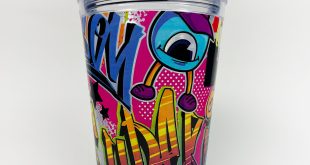
P&P editor Melanie Attlesey takes a look at sustainable cotton – what it is and what makes it the future of garment manufacture.
I’m sure I’m not in the minority when it comes to not fully understanding, recognising or appreciating the differences between organic cotton and sustainable cotton.
Rather than try to provide a meagre attempt at explaining the difference, I thought I would ask two of the largest apparel manufacturers in the printwear industry for their thoughts on what’s what.
With 25 company-owned manufacturing facilities across the globe, Gildan certainly knows a thing or two about cotton. Gildan’s president of sales, marketing and distribution, Chuck Ward, explains that organic cotton refers to cotton produced by certified organic standards, which includes cotton grown from non-GMO seeds and without the use of pesticides or other chemicals and fertilisers.
He continues to explain that there are two types of certifications that buyers can get when it comes to organic cotton. The first is a farm-level certification and the second is a finished product certification. However, it is important to note that organic certifications for cotton do not cover additional factors, such as harvesting and farming practices or certain environmental impacts. This is where sustainable cotton enters.
“Sustainable cotton covers a larger scope, namely how a cotton crop is grown and harvested,” he continues. “Sustainable cotton under the Better Cotton Initiative and The U.S. Cotton Trust Protocol for instance, take into consideration the labour and human rights practices involved, in addition to the environmental practices. This allows buyers to understand energy used and GHG emissions on how the crop was produced, but also the working conditions the farmers and growers have. In short, sustainable cotton takes a more holistic approach to its impact.”
Made the right way
For FOL International, sustainable cotton means cotton that was made the right way, as Christian Lanvermann, brand marketing manager at FOL International, explains: “This includes ethical business practices and manufacturing, with modern production facilities, transparent supply chains, independent certifications, sustainable sourcing as well as safe and fair working conditions. As a company committed to the respect for human rights, we only use ethically produced yarn to manufacture our garments. Since 2013, we do not use Uzbekistan cotton, and since 2019, we do not use cotton from Turkmenistan or the Xinjiang Uyghur region in China.”

There are numerous parallels between Gildan and FOL International as both manufacturers strive to become more sustainable in their practices. Firstly, both manufacturers source the majority of their cotton from the United States mainly because of the inherent ethical and sustainable benefits that it has as a highly regulated crop.

Chuck explains: “US cotton is regulated as a food crop under strict United States Department of Agriculture (USDA) and the Environmental Protection Agency (EPA) guidelines. So, for us, cotton grown in the US represents the best combination of quality and value for our products. Under the guidance of the National Cotton Council, USDA, and various other organisations, US farmers have continuously reduced their environmental footprint by adopting various agricultural practices to conserve resources and maximise efficiency.
“Over the past 35 years, US cotton production has used 79% less water per bale and 54% less energy, reduced greenhouse gas emissions by 40%, all while reducing land use per bale by 49%. The adoption of practices such as minimal tillage, GPS and sensor-driven precision agriculture, and the growing of winter cover crops have further improved soil health, reducing loss and erosion by 37% per acre and increasing soil carbon levels. In addition, cotton uses less water than many other major crops produced in this country.”
Secondly, both companies also own and operate their manufacturing facilities to further control the process. “Having full control over production means we can control the quality, the colour, and consistency of the garments,” says Christian. “But even more importantly, it means we can make our collections fairly and with respect for the people we work with, along with a committed focus on sustainability and environmentally-sound production.”
And thirdly, both companies have also recently launched their own sustainability campaigns to drive the message home to customers about the value of sustainable cotton and the manufacturing process. Both share the goal of using and sourcing 100% sustainable cotton by 2025.
The Gildan Respects campaign aims to reinforce the appeal of Gildan’s approach to making apparel products with respect for the environment, circularity, communities and transparency. Whereas Fruit of the Loom’s The Fruit Way and Russell Europe’s Belong to a Better Future sustainability campaigns outline the brands’ commitments to ambitious sustainability targets for 2025 and 2030.
Changing views
But where does this leave organic cotton? Are consumers turning away from it in favour of sustainable cotton?

“We believe that the world views on sustainability are changing,” says Chuck. “Whether that is looking at third-party verification and/ or certified organic cotton. While the trend of organic cotton at retail continues to be popular, only 1% of the world’s cotton production is organic. There are other cotton options out there that are as sustainable as organic cotton and more accessible and available to the general consumer.”

It could be that views are also changing because the price of organic cotton has rocketed in recent months due to demand. “This is because there is just not enough organic cotton available on the market. The demand is enormously high, partly because organic cotton is easier to understand for the end user” explains Christian. “The concept of sustainable cotton – including ethical manufacturing, transparent supply chains, independent certifications, and responsible sourcing – is far more complex to communicate and to understand.”
This increase in demand is has opened the door for more and more cotton farmers across the world to transition to organic farming, so at present the market is seeing a lot of ‘organic in conversion’ or ‘in-conversion cotton’ garments become available.
It does appear that there is still a long way to go in terms of educating the end user about the differences between sustainable cotton and organic cotton, a sentiment that Chuck agrees with.
“There is certainly not enough awareness in the market right now for individuals to really understand the difference between organic, sustainable, and regular cotton,” says Chuck. “I think we need to continue to educate the public on what sustainable cotton is, existing standards and certifications in place, as well as technology that is being implemented to improve and pave the way for more sustainable cotton farming practices.”
This is where third party organisations such as Cotton USA, Better Cotton Initiative and The U.S. Cotton Trust Protocol step in. These organisations make it their mission to promote the benefits of sustainable cotton, to help everyone within the supply chain to produce sustainable cotton, and to educate the end user about sustainable cotton.
By partnering with these organisations, manufacturers such as Gildan and FOL International are provided with quantifiable goals and measurements to sustainable cotton production such as land use, soil carbon, water management, soil loss, GHG emissions, and energy efficiency. Creating an all-round more sustainable supply chain over time, which is the ultimate common goal for the industry.
A better tomorrow
“Sustainable cotton is just the first part of what you need to make apparel,” says Chuck. “It is important to not only look at your ingredients but the whole manufacturing process, and more importantly how we measure all of it for improvement.”
Christian agrees: “We believe that sustainable cotton is a way to a better tomorrow, and we actively engage in driving awareness on environmental issues and quality, and want to offer our clients eco-friendly, long-lasting and fair produced clothing.”
Organic cotton has been in the spotlight for many years now, maybe it’s about time attention was directed towards sustainable cotton production and its benefits.
 Printwear & Promotion The Total Promotional Package
Printwear & Promotion The Total Promotional Package




